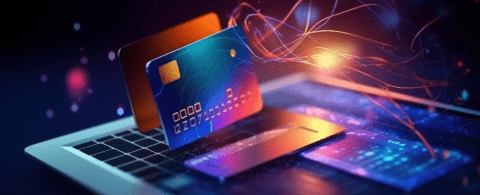How the Evolution of EBPP Affects Credit Unions
Posted by Kristen Jason on 15 Jan 2024


Electronic Bill Presentment and Payment (EBPP) is impactful for all financial institutions, but is especially so for credit unions. This technology not only streamlines billing processes but also profoundly impacts member engagement and satisfaction. In a webinar, The Evolution and Opportunities of EBPP for Credit Unions," Stuart Bain, SVP of Product Management at Alacriti, delved into the past, present, and future of EBPP. His insights covered trends in consumer bill payments, opportunities for credit unions, loan payment fraud prevention, impact on member conversion, the role of AI, and the significance of the TCH’s RTP® network and FedNow® Service.
The Transformation of EBPP
EBPP's journey began in the 1990s. Initially, uptake was slow due to limited internet access. The early 2000s saw a surge in adoption as internet usage became more widespread. Initially, EBPP solutions were mostly in-house developments by large billers, focusing on ACH payments with occasional card transactions. These solutions were often siloed and lacked integration, making customer support challenging and lacking a unified view of payments.
However, as consumer expectations shifted towards real-time interactions, EBPP providers responded by integrating additional channels into their bill pay solutions. This evolution led to more comprehensive platforms that included various payment channels like web payments, call center solutions, and IVR systems. The result was a unified, more efficient EBPP system offering insights into customer payment preferences and behaviors.
Emerging Trends in Consumer Bill Payments
Consumer bill payments are, of course, now dominated by electronic methods. A shift away from traditional checks to ACH, credit, and debit card payments is evident, with electronic methods comprising the bulk of transactions. 2023 Datos Insights data shows that 16.8 billion bills are paid annually in the U.S. adding up to a total of $5.4 trillion. Electronic payment methods comprise the bulk (~83%). This shift aligns with consumer expectations for convenience, speed, and flexibility in payment options.
For credit unions, this trend presents both challenges and opportunities. The diverse payment preferences of consumers mean that credit unions must offer a variety of payment options to meet member needs. The rise of real-time payments, fueled by networks like TCH’s RTP® network and the FedNow® Service, is reshaping expectations, with consumers increasingly valuing the immediacy of transactions.
Opportunities and Challenges for Credit Unions
For credit unions, embracing EBPP is not just about technology adoption; it's a strategic move to enhance member satisfaction and retention. Nearly half of consumers view the ability to pay bills online as important when choosing their institution, which includes not only the ability to pay accounts at the institution, but also the ability to pay accounts at other institutions from inside that solution. A robust EBPP system can transform the loan payment experience, offering members convenient, secure, and immediate payment options. This transformation can lead to increased loyalty, more business opportunities, and improved financial performance for the credit union.
The opportunities that come from a modern EBPP solution go beyond a great member experience. Another way that a modern EBPP solution can help is by managing loan overpayments and fraud. For example, bust-out fraud on credit cards where people overpay a card with a low limit to try and get access to those funds, knowing that the ACH payments they've made are going to result in insufficient funds. A good bill pay solution can help address these issues with dynamic payment limits based on an amount owed or a credit line and prevent these overpayments from being scheduled in the first place.
Another benefit of bill payment modernization is a reduction in processing costs. The increase in online bill payments can result in the reduction of call center volume and even transaction costs when it’s easier for members to pay with a banking account (ACH-funded payments).
However, the journey is not without challenges. Credit unions must navigate the complexities of integrating various payment channels, ensuring compliance with evolving standards like PCI DSS and NACHA, and addressing the ever-present risk of fraud. At the same time, credit unions have to provide a seamless and intuitive user experience—especially on mobile platforms. These challenges can be met with a modernized EBPP solution.
The Role of AI and Real-time Payments
AI (artificial intelligence) and real-time payments are two critical components shaping the future of EBPP. AI, particularly in the form of chatbots, can enhance customer service by handling routine inquiries and payment transactions, thereby freeing up valuable human resources for more complex tasks. Meanwhile, real-time payment networks are setting new standards for payment speed and reliability.
Request for Payment (RfP), a capability that’s only possible on real-time networks, offers a secure, reliable method for high-risk transactions, ensuring irrevocable and immediate transfer of funds. This feature is particularly relevant for sensitive transactions such as loan payoffs or new account funding.
The Road Ahead for EBPP
Bill pay is a key member touchpoint, and for some, it may be the only touchpoint. If it's hard to make a payment or they can't get through to make a payment, they'll be dissatisfied and it may deter them from opening new accounts. If they're offered the opportunity to take out another loan, they may think of the difficulty of making a payment and decide elsewhere. Conversely, a good online loan payment experience may lead to opportunities to expand that relationship.
EBPP is poised for further evolution. The integration of new technologies such as AI and the widespread adoption of real-time payment networks will continue to influence how credit unions serve their members. These advancements will not only enhance operational efficiencies, but also provide a more satisfying member experience overall. As credit unions move forward, the key will be to balance technological innovation with a deep understanding of member needs. By doing so, credit unions can leverage EBPP not just as a tool for efficient billing but as a strategic asset to foster stronger, more enduring relationships with their members.
To explore the history and future of EBPP and gain insights into its most important aspects, watch the full webinar, The Evolution and Opportunities of EBPP for Credit Unions hosted by NACUSO and featuring Alacriti.
Alacriti’s Orbipay EBPP is a customizable electronic billing and payments solution for businesses and financial institutions of all sizes. Orbipay EBPP offers convenient and flexible choices that include all the payment channels, payment methods, and payment options expected from a modern digital bill pay experience. For more information, please contact us at info@alacriti.com.
Schedule A Personalized Demo
Schedule a Free Consultation





